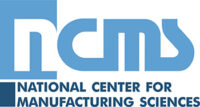The B-52H has relied on its current parts requisition process for roughly 70 years. Some parts have become obsolete resulting in condemnation and cannibalization. Replacement parts are needed.
Background
B-52 is seeking information regarding parts replacements and obsolescence listed below.
To produce a Form/Fit/Function (F3) Attitude Indicator (AI) prototype that meets Mil-I-83336/5 Standards. Engineer, Prototype, Test, and qualify an F3I AI. Substantiate Class II changes and provide a full Technical Data Package to support integration efforts. The supplier would be expected to provide any maintenance procedures and special tools/support equipment associated with troubleshooting/repairs of the prototype. A Critical Design Review (CDR) level re-design is expected in under 24 calendar months.
To produce a Form/Fit/Function (F3) Horizontal Situational Indicator (HSI) prototype that meets Mil-I-27193 Standards and SOW-E-77-572. This effort would engineer, prototype, test, and qualify F3 HIS, to substantiate Class II changes and provide a full Technical Data Package to support integration efforts. A supplier would be expected to provide any maintenance procedures and special tools/support equipment associated with troubleshooting/repairs of the prototype.
To produce a Form/Fit/Function (F3) Horizontal Situational Indicator (HSI) prototype that meets Mil-I-26689 Standards. Engineer, Prototype, Test, and qualify F3 HSI. Substantiate Class II changes and provide a full Technical Data Package to support integration efforts. The supplier would be expected to provide any maintenance procedures and special tools/support equipment associated with troubleshooting/repairs of the prototype. A CDR-level re-design is expected in under 24 calendar months.
To produce a Form/Fit/Function (F3) Mach Indicator prototype that meets Mil-I-25479A Standards and SOW-E-77-572. Engineer, Prototype, Test, and qualify F3 HSI. Substantiate Class II changes and provide a full Technical Data Package to support integration efforts. The supplier would be expected to provide any maintenance procedures and special tools/support equipment associated with troubleshooting/repairs of the prototype. A CDR-level re-design is expected in under 24 calendar months.
To produce a Form/Fit/Function (F3) Course Indicator prototype that meets Mil-R-5821 Standards. Engineer, Prototype, Test, and Qualify F3 Course Indicator. Substantiate Class II changes and provide a full Technical Data Package to support integration efforts. The supplier would be expected to provide any maintenance procedures and special tools associated with troubleshooting/repairs of the prototype. A CDR-level re-design is expected in under 24 calendar months.
To produce a Form/Fit/Function (F3) Flight Director Computer prototype that meets Mil-C-27170 Standards. Engineer, Prototype, Test, and Qualify F3 Flight Director Computer. Substantiate Class II changes and provide a full Technical Data Package to support integration efforts. The supplier would be expected to provide any maintenance procedures and special tools/support equipment associated with troubleshooting/repairs of the prototype. A CDR-level re-design is expected in under 24 calendar months.
A supplier may submit a proposal for all parts or individually. All requested drawings will be provided via DOD SAFE by request via NCMS opportunities@ncms.org with the submission of your company DD2345. Once the DD2345 is verified, drawings will be provided.
Objectives
- Attitude Indicator – The solution must meet the requirements of Mil-I-83336/5. It must seamlessly integrate with the legacy systems it interfaces with. The solution must also meet the nuclear hardness requirements of the B-52H.
- Horizontal Situational Indicator – The solution must meet the requirements of Mil-I-27193 and SOW-E-77-572. It must seamlessly integrate with the legacy systems it interfaces with. The solution must also meet the nuclear hardness requirements of the B-52H.
- Horizontal Situational Indicator B-52 Flight Director Computer – The solution must meet the requirements of Mil-I-26689 and seamlessly integrate with the legacy systems it interfaces with. The solution must also meet the nuclear hardness requirements of the B-52H.
- B-52 ME-5 Mach Indicator – The solution must meet the requirements of Mil-I-25479A. It must seamlessly integrate with the legacy systems it interfaces with. The solution must also meet the nuclear hardness requirements of the B-52H.
- Course Indicator – The solution must meet the requirements of Mil-R-5821 Standards and seamlessly integrate with the legacy system. The solution must also meet the nuclear hardness requirements of the B-52H.
- Flight Director Computer – The solution must meet the requirements of Mil-C-27170 and seamlessly integrate with the legacy system. Some Mil-C-27170 requirement thresholds may be adjusted based on Government System Engineering approval. The solution must also meet the nuclear hardness requirements of the B-52H.
Submission Requirements
Interested parties should provide a ROM via the NCMS cost summary form (CSF) and a White Paper response with NO MORE than FOUR (4) pages, not including a cover page, using the format below. The CSF will be provided with the drawings.
The White Paper must include the following:
- Describe general approach to include phases to accomplish the objective
- Describe assumptions
- Detailed approach to the objective
- List of tasks
- List of deliverables
- Must provide CTMA final report
- High level project schedule and timing
- Describe rough order of magnitude cost
- A more detailed cost analysis will be expected later in the process
- A description of recent and relevant experience in accomplishing similar evaluations and
- using modeling and simulation tools and processes
- URLs to corporate presentations including engineering, modeling and simulation, prototyping, testing, and manufacturing capabilities.
Deadline
Responses are due to opportunities@ncms.org by COB January 31, 2025.
Evaluation Criteria
Cost, scheduled, Sustainability and Engineering approach
Technical Feasibility. How technically feasible is the proposed solution, given the present state of the technology? Solutions with a lower technological risk profile are favored.
Responsiveness. How responsive is the proposed solution? Solutions responsive to the problem identified, without creating new problems, are favored.
Viability. How viable is the proposed solution, given existing organizational and regulatory environments? Solutions compatible with existing DLA, DoD, and federal policies, processes, and procedures are favored.
Desirability. How desirable is the proposed solution to the eventual end-user? Solutions easily adaptable, useful, and implementable are favored.
Funding. Does funding reasonably exist to fund the proposed solution? Solutions with lower prices are favored.
The B-52H has relied on its current parts requisition process for roughly 70 years. Some parts have become obsolete resulting in condemnation and cannibalization. Replacement parts are needed.
Background
B-52 is seeking information regarding parts replacements and obsolescence listed below.
To produce a Form/Fit/Function (F3) Attitude Indicator (AI) prototype that meets Mil-I-83336/5 Standards. Engineer, Prototype, Test, and qualify an F3I AI. Substantiate Class II changes and provide a full Technical Data Package to support integration efforts. The supplier would be expected to provide any maintenance procedures and special tools/support equipment associated with troubleshooting/repairs of the prototype. A Critical Design Review (CDR) level re-design is expected in under 24 calendar months.
To produce a Form/Fit/Function (F3) Horizontal Situational Indicator (HSI) prototype that meets Mil-I-27193 Standards and SOW-E-77-572. This effort would engineer, prototype, test, and qualify F3 HIS, to substantiate Class II changes and provide a full Technical Data Package to support integration efforts. A supplier would be expected to provide any maintenance procedures and special tools/support equipment associated with troubleshooting/repairs of the prototype.
To produce a Form/Fit/Function (F3) Horizontal Situational Indicator (HSI) prototype that meets Mil-I-26689 Standards. Engineer, Prototype, Test, and qualify F3 HSI. Substantiate Class II changes and provide a full Technical Data Package to support integration efforts. The supplier would be expected to provide any maintenance procedures and special tools/support equipment associated with troubleshooting/repairs of the prototype. A CDR-level re-design is expected in under 24 calendar months.
To produce a Form/Fit/Function (F3) Mach Indicator prototype that meets Mil-I-25479A Standards and SOW-E-77-572. Engineer, Prototype, Test, and qualify F3 HSI. Substantiate Class II changes and provide a full Technical Data Package to support integration efforts. The supplier would be expected to provide any maintenance procedures and special tools/support equipment associated with troubleshooting/repairs of the prototype. A CDR-level re-design is expected in under 24 calendar months.
To produce a Form/Fit/Function (F3) Course Indicator prototype that meets Mil-R-5821 Standards. Engineer, Prototype, Test, and Qualify F3 Course Indicator. Substantiate Class II changes and provide a full Technical Data Package to support integration efforts. The supplier would be expected to provide any maintenance procedures and special tools associated with troubleshooting/repairs of the prototype. A CDR-level re-design is expected in under 24 calendar months.
To produce a Form/Fit/Function (F3) Flight Director Computer prototype that meets Mil-C-27170 Standards. Engineer, Prototype, Test, and Qualify F3 Flight Director Computer. Substantiate Class II changes and provide a full Technical Data Package to support integration efforts. The supplier would be expected to provide any maintenance procedures and special tools/support equipment associated with troubleshooting/repairs of the prototype. A CDR-level re-design is expected in under 24 calendar months.
A supplier may submit a proposal for all parts or individually. All requested drawings will be provided via DOD SAFE by request via NCMS opportunities@ncms.org with the submission of your company DD2345. Once the DD2345 is verified, drawings will be provided.
Objectives
- Attitude Indicator – The solution must meet the requirements of Mil-I-83336/5. It must seamlessly integrate with the legacy systems it interfaces with. The solution must also meet the nuclear hardness requirements of the B-52H.
- Horizontal Situational Indicator – The solution must meet the requirements of Mil-I-27193 and SOW-E-77-572. It must seamlessly integrate with the legacy systems it interfaces with. The solution must also meet the nuclear hardness requirements of the B-52H.
- Horizontal Situational Indicator B-52 Flight Director Computer – The solution must meet the requirements of Mil-I-26689 and seamlessly integrate with the legacy systems it interfaces with. The solution must also meet the nuclear hardness requirements of the B-52H.
- B-52 ME-5 Mach Indicator – The solution must meet the requirements of Mil-I-25479A. It must seamlessly integrate with the legacy systems it interfaces with. The solution must also meet the nuclear hardness requirements of the B-52H.
- Course Indicator – The solution must meet the requirements of Mil-R-5821 Standards and seamlessly integrate with the legacy system. The solution must also meet the nuclear hardness requirements of the B-52H.
- Flight Director Computer – The solution must meet the requirements of Mil-C-27170 and seamlessly integrate with the legacy system. Some Mil-C-27170 requirement thresholds may be adjusted based on Government System Engineering approval. The solution must also meet the nuclear hardness requirements of the B-52H.
Submission Requirements
Interested parties should provide a ROM via the NCMS cost summary form (CSF) and a White Paper response with NO MORE than FOUR (4) pages, not including a cover page, using the format below. The CSF will be provided with the drawings.
The White Paper must include the following:
- Describe general approach to include phases to accomplish the objective
- Describe assumptions
- Detailed approach to the objective
- List of tasks
- List of deliverables
- Must provide CTMA final report
- High level project schedule and timing
- Describe rough order of magnitude cost
- A more detailed cost analysis will be expected later in the process
- A description of recent and relevant experience in accomplishing similar evaluations and using modeling and simulation tools and processes
- URLs to corporate presentations including engineering, modeling and simulation, prototyping, testing, and manufacturing capabilities.
Deadline
Responses are due to opportunities@ncms.org by COB January 31, 2025.
Evaluation Criteria
Cost, scheduled, Sustainability and Engineering approach
Technical Feasibility. How technically feasible is the proposed solution, given the present state of the technology? Solutions with a lower technological risk profile are favored.
Responsiveness. How responsive is the proposed solution? Solutions responsive to the problem identified, without creating new problems, are favored.
Viability. How viable is the proposed solution, given existing organizational and regulatory environments? Solutions compatible with existing DLA, DoD, and federal policies, processes, and procedures are favored.
Desirability. How desirable is the proposed solution to the eventual end-user? Solutions easily adaptable, useful, and implementable are favored.
Funding. Does funding reasonably exist to fund the proposed solution? Solutions with lower prices are favored.




